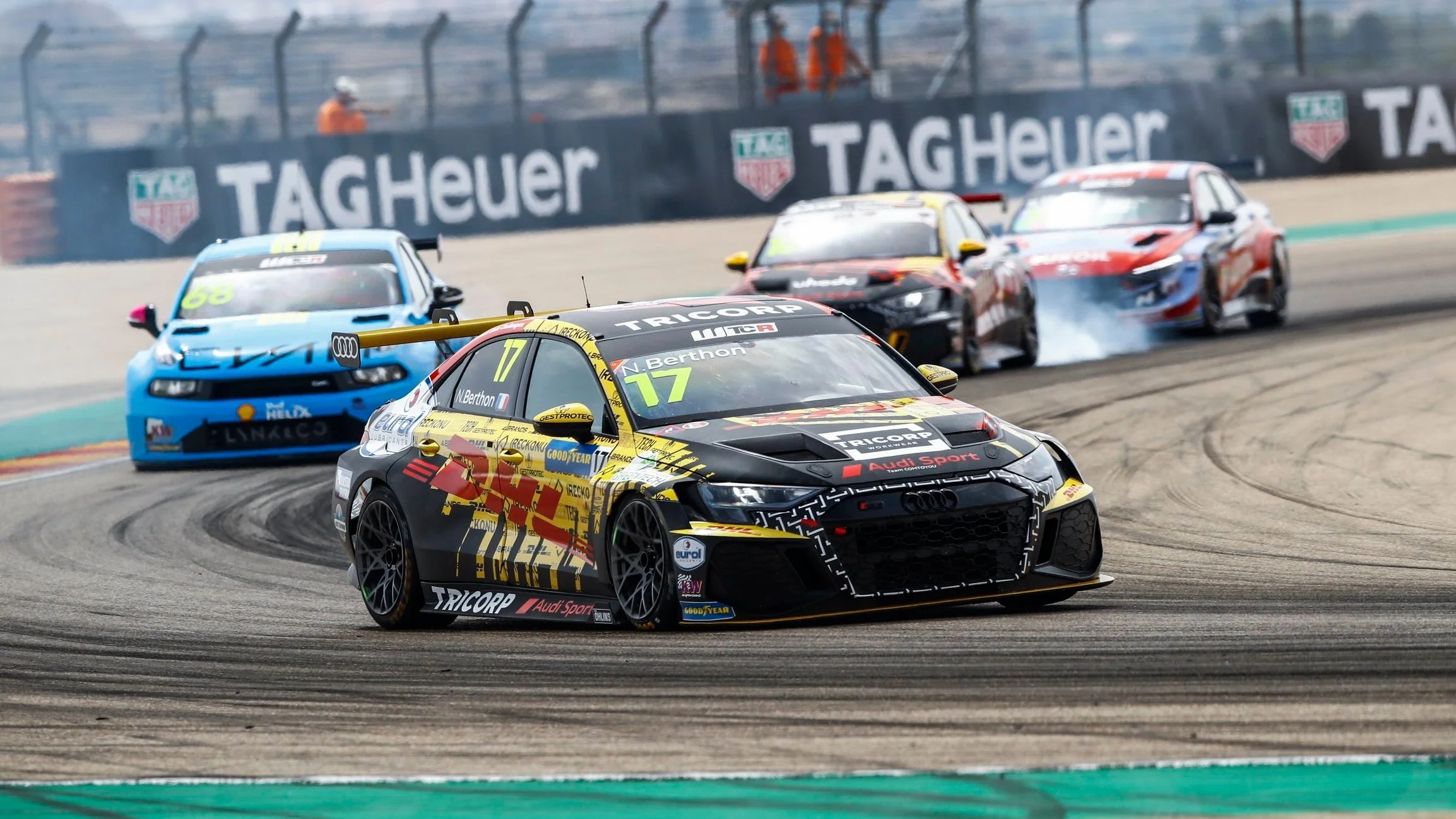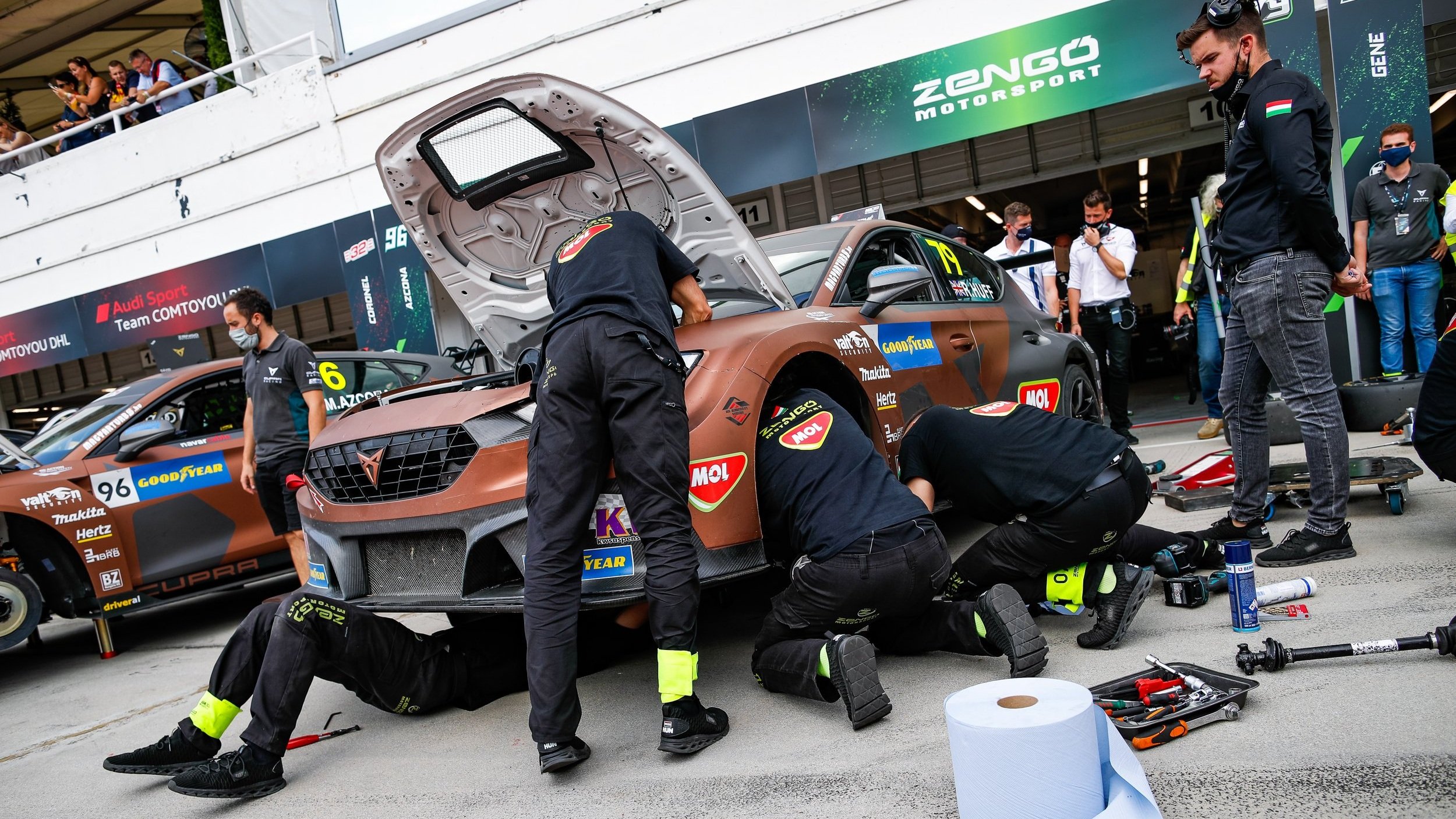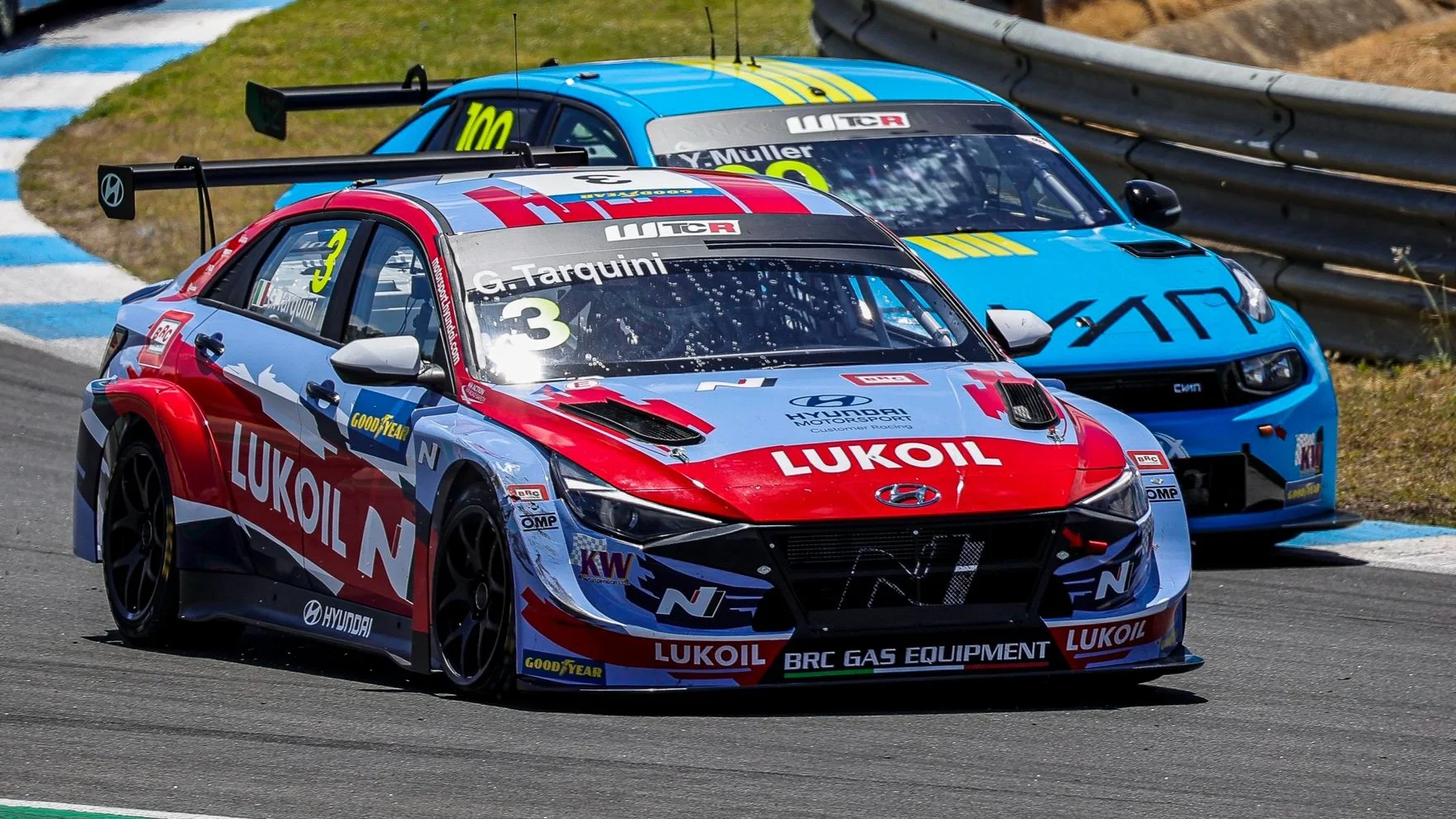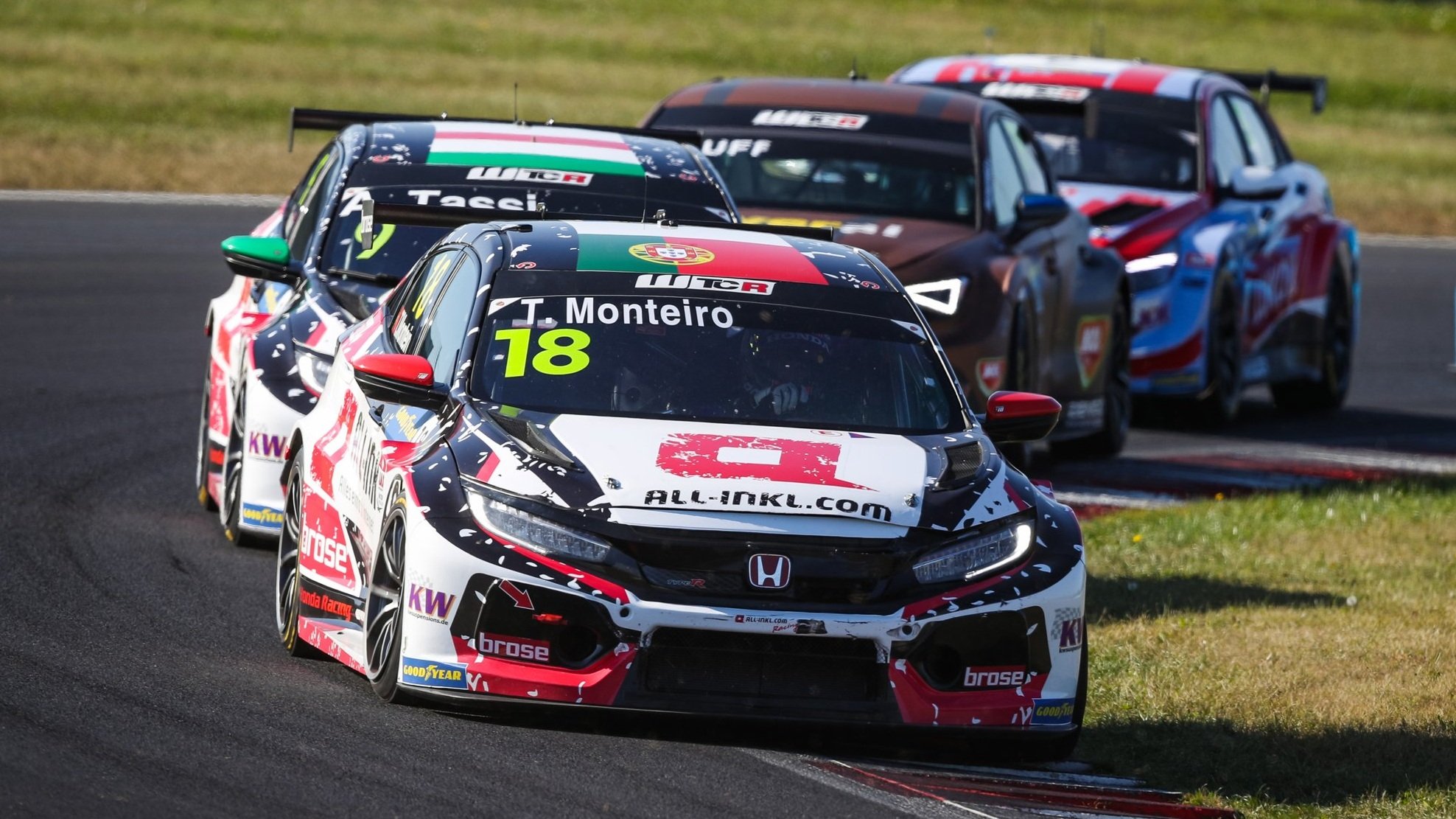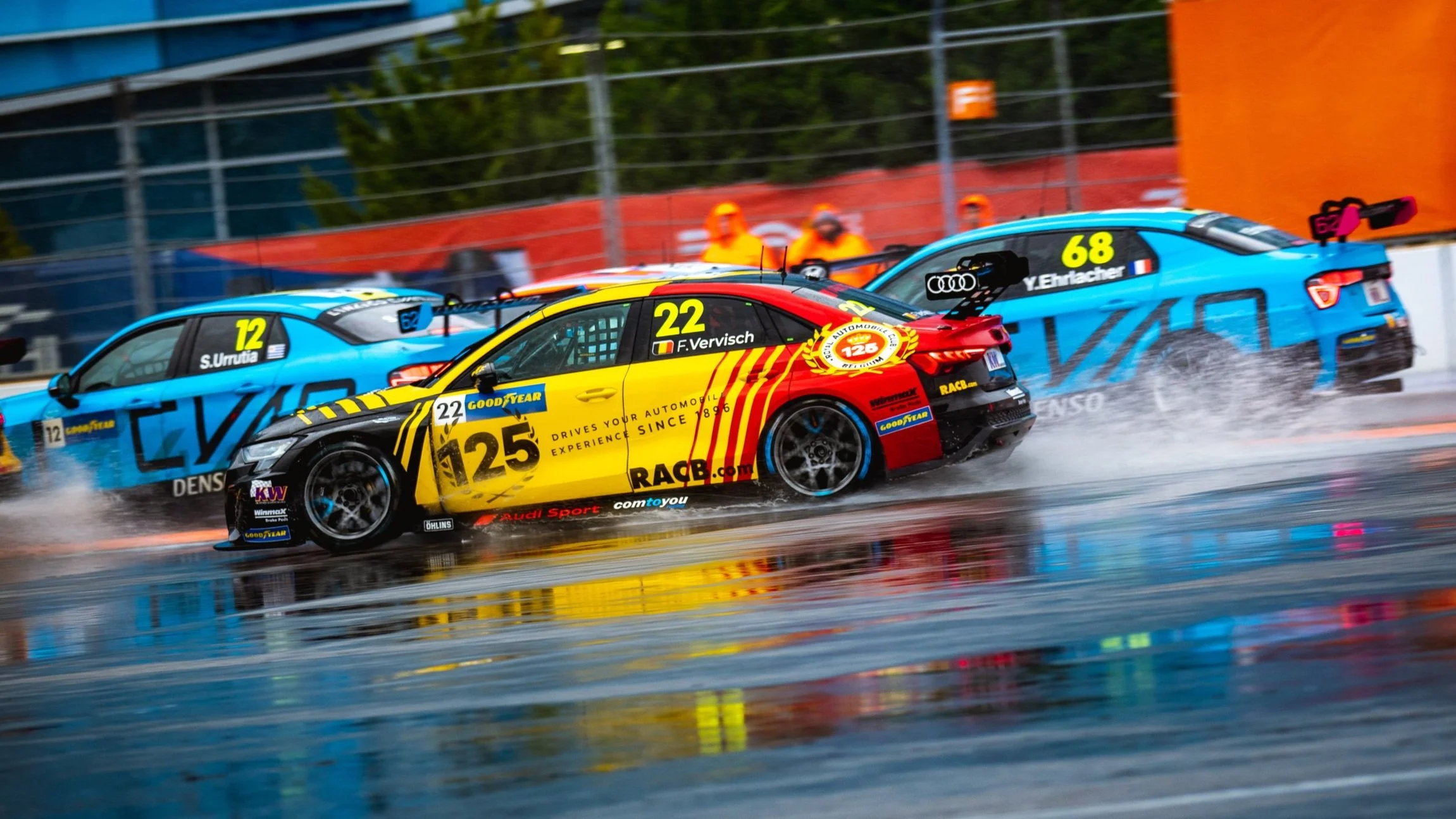Overview of new WTCR sporting rules
The WTCR - FIA World Touring Car Cup has revealed some key sporting regulation changes for its 2022 season, and they’re likely to make quite a difference to the show - which should also resolve some of the problems seen in the 2021 season.
Here’s a run down of the changes, and the problems they’ll address.
Taking the weight off
The biggest issue affecting the championship in 2021 was the compensation weight - or more precisely, the compensation weight measures as they were when coupled with the separate WSC-calculated Balance of Performance (BoP) measures.
Compensation weight is very much a touring car exclusive these days - a performance-based penalty system assigning more weight (in the case of WTCR) to the fastest performing models of car. In other series, the trend has been to switch back to what was traditionally called success ballast - where it’s the driver that is penalised, instead of the car - whether that’s based on the drivers lap times, or championship position depends on the series.
Compensation weight has been a staple of the World Touring Car Cup, and its predecessor the World Touring Car Championship (WTCC), for quite some time. The WTCC switched to compensation weight from a driver-based system due to the large manufacturer teams present in the series at the time, with some five or more works-run BMWs and SEATs on the grid. As just penalising one driver would just see another one from the same make spring forward at the next race.
The compensation weight system in 2021 went as high as 60kg, and would first be applied after two race meetings. After that, it was calculated on a three-race average basis.
So, for Round 3, the best lap times from Rounds 1 and 2 were used; for Round 4, the times from 1, 2, and 3 - and for Round 5, Round 1 would drop off and it would be 2, 3, and 4.
In a shorter season like 2021, which only featured eight rounds, this meant it could take a significant amount of time to shake off the weight.
Honda was the most crippled by this; with the Munnich Motorsport-run cars showing great pace while the field was level over the first two rounds in Germany and Portugal - and so they found themselves carrying excess lead until the last half of the season, and went from championship leaders to the bottom half of the top ten. They did well to reclaim third in the drivers’ championship by the end of the year.
Cupra benefitted from the pendulum effect this system, especially with the three-race average creates. As their rivals gained weight, they found themselves very light come the Zengo Motorsport team’s home race in Hungary, with Rob Huff securing pole position, and with Mikel Azcona taking pole the following weekend in Czechia.
After that, they again dropped back into the midfield as the weight piled on, before it was again removed for the season finale in Russia, where Huff and Azcona took a win each.
Cyan Racing were noted for gaming the system, with the Lynk & Co drivers often driving to a lap time to ensure the compensation weight was managed throughout the year, which played a part in their title success. You can’t blame them for the tactic, as compensation weight is part of the regulations - and the objective is to win the drivers’ and teams’ title, and that’s what they did.
However, despite all this helping to create a season where there were ten different drivers over the first ten events, the fact that was in part quite artificial due to the compensation weight effect, the FIA has made some changes for 2022.
First, the maximum weight has been reduced to 40kg. This is absolutely sensible, especially as the Balance of Performance measures (certainly for the established models of car) are now very close to accurate. Compensation weight’s beneficial side effect has always been to smooth out any inaccuracies in this calculation, but now it’s very much a penalty weight system only, and 60kg on a 1,265kg car, worth at least half a second, is certainly excessive, especially when the level between the teams and drivers is so close.
Second, there’s a change to how compensation weight is applied. The two race wait is gone - the weight is now calculated after one race weekend, and then applied over a two race average instead of three. This will mean the ‘Honda effect’ above will be greatly reduced, as well as the size of the pendulum effect.
There’s still a school of thought that says why have compensation weight at all if you’ve already got a working BoP system? - but that’s a completely different discussion.
Rob Huff’s Zengo Motorsport Cupra Leon Competición undergoing repairs at the Hungaroring. Photo: DPPI
Fixing the fixing time
The next rule to be changed has been to the repair time allocation between races. Increased from a tight 20-minute turnaround to a whole hour.
Repair time has also been a long-standing rule in the WTCR and WTCC, but it is rare in any other series.
The most obvious problem this resolves is when the scale of repair needed within twenty minutes is marginal, but they’re undertaken anyway to ensure that the car still keeps its grid position for the second race, rather than being taken out of parc fermé conditions and being sent to the back of the grid.
Two drivers had this issue in 2021. Rob Huff at the Hungaroring, and Tiago Monteiro at Pau-Arnos.
Huff had qualified on pole position for Race 2 in Hungary, but after breaking his suspension after hitting a tyre stack in the first race, his Zengo Motorsport team had just the allocated repair time to replace the component so he could take up his highly favourable grid position for the second race.
They missed the cut-off by about 30 seconds, which meant Huff was forced to start from the pit lane, and lost any chance of victory, or even points that day.
Monteiro was involved in a first lap incident with Cyan Racing’s Yann Ehrlacher in France. His car was returned to the paddock during the break between races. And on this occassion, his team managed to replace the Civic TCR’s rear suspension within the repair time with about a minute to spare, allowing him to take up his 11th position on the grid.
With repair time now up to 60 minutes, repairs of this nature will easily be able to be completed, but that isn’t the only benefit of this change.
There’s no question, a behaviour certainly seen in Race 1 was for drivers to race very carefully, especially those who had more favourable grid positions for the second race. Why risk contact and damage which could not be resolved in repair time? Especially when broken suspension is the most likely outcome, and ruin your second race when you’re starting from a better grid spot?
With repair time increased, protecting the car for Race 2 won’t be as much as a priority, as arguably outside of an engine change, most battle scars could be sorted within an hour.
So the most likely benefit of this change will be harder racing in the first race of the day.
Gabriele Tarquini started the most times from reversed grid pole - that’s twice. Photo: DPPI
Points scale for reversed grid races reduced
This is an interesting one, as the WTCR had tried to fix this issue before. In the entire history of the WTCC, the points for the partially reversed grid race have always been the same as the grid where the fastest qualifier starts from pole. But when the WTCR was launched in 2018, now no longer an FIA World Championship - it did away with the 25-20-15… scoring system and introduced its unique system for its race weekends, of which there were three over the course of the weekend at its launch.
The slightly shorter first race awarded 27 points maximum for victory, while the reversed grid race was 25 for the win, and the final, slightly longer final race awarded 30 points.
This system was done away with in 2019 and the scoring system was made the same for all three races. This was because having three different points scales was incredibly confusing.
However, now that the WTCR has reverted back to two races per weekend, it’s OK again to go back to what was probably a reasonably fair approach - a win in the reversed grid race shouldn’t be worth as much as the other race - unless I suppose it’s from the guy who had qualified fastest and had to start from tenth - then he’s definitely earned it!
Tiago Monteiro’s Munnich Motorsport Honda Civic TCR. Photo: DPPI
Qualifying points for all three segments
This is the slightly odd change, and is born out of a bit of an oddity in the qualifying points system.
WTCR’s qualifying is pretty complicated, so here’s an attempt at a quick recap. In Q1 (typically 20 minutes), all cars participate - the top 12 go to Q2 (ten minutes), while 13th and below are locked in for both races. In Q2, the top five go to Q3 (top five cars in a single-lap shootout), but the result of qualifying is reversed for one of the races. So effectively by the end of Q2, if you’re tenth, you know you’ve got the reversed grid pole. If you’re 11th, whoops.
From 2018, the format now included a separate qualifying session for Saturday’s race, and one for Sunday’s races - there were two on Sunday, including the one with the reversed grid.
The Saturday qualifying session was a traditional fastest gets pole, slowest gets last format; and the three-part session was kept for Sunday.
Qualifying points were initially awarded just for the Sunday session (the scale of 5-4-3-2-1 for the top five). However, from 2019, the same scale was then applied to the Saturday session as well.
When the championship moved to a two-race format in 2020, the points previously given to Saturday qualifying were moved to Q1. This meant the session which effectively played no part in establishing the order of the top 12 cars on the grid awarded points, while the second segment didn’t, yet they were back for Q3 which was the single lap shootout.
This seemed a bit inconsistent. Why did Q1 have equal value to Q3, but Q2 have no comparative points value? So for 2022, the FIA have introduced points for Q2 as well. So you can in theory, score 15 points over the course of qualifying.
This seems a little strange though. The reward for finishing in the top five of Q2 is to go to Q3, where points are already guaranteed, so it’s a double-hit.
There already was enough incentive to be fast in Q2, given Q3 already hands out points (therefore discouraging just trying out for the reversed grid pole with tenth). I’d have thought the most sensible move would have been to drop the points for Q1, and just hand out the points for the top five in the combined qualifying result (effectively Q3).
Anyway, let’s see how it works out - but with a rather large number of points available for qualifying alone, let’s hope the title doesn’t end up being decided on the Saturday next year.
Frédéric Vervisch’s Comtoyou Racing Audi RS 3 LMS gen II battling with Cyan Racing Lynk & Co 03 TCRs at Sochi. Photo: DPPI
Restoring the reversal of the last race
This one is putting the race format back to how it was up until 2016 , and still is in almost every other touring car series - with the reversed grid race being the last of the weekend.
While the change to increase repair time has the objective of ensuring everyone drives harder in the first race, having the reversed grid race as the last race of the day ensures the most excitement happens at the end of the weekend.
There was certainly some merit to the ‘Main Race’ approach adopted in 2016. The approach was to put the race where the grid was set in qualifying order as the last event, which meant the race likely to be won on merit of true pace and performance was the last one in memory come ‘sell on Monday’. It’s a sound theory, but its benefit was probably overestimated compared to the detriment to the show.
The reality is the last race needs to be the most memorable - and you’re far more likely to get a more memorable race when the driver who has proven to have the fastest car is starting in tenth, and also knows there’s a good two weeks before their car will be in action again - 60 minutes of repair time pales in comparison to 20,160 minutes (yes, I used a calculator).
The WTCC, or more precisely its predecessor, the European Touring Car Championship, was actually the first championship to bring in the two-race format with the reversed grid last race. It worked so well the BTCC also borrowed the concept when it adopted Super 2000 regulations in 2004 - and still has it, and it’s been used fairly consistently across the TCR family of regional and national series as well.
So welcome back to the wacky final race of the day in WTCR. It should be fun.
In summary, all of these changes, though none are exactly evolutionary, they’re great revolutionary steps, taking some of the best of what’s worked before, and fixing some of the issues that have been created while other improvements have been made over the years - and should definitely improve the show, the flow of the championship, and also be more fair.

